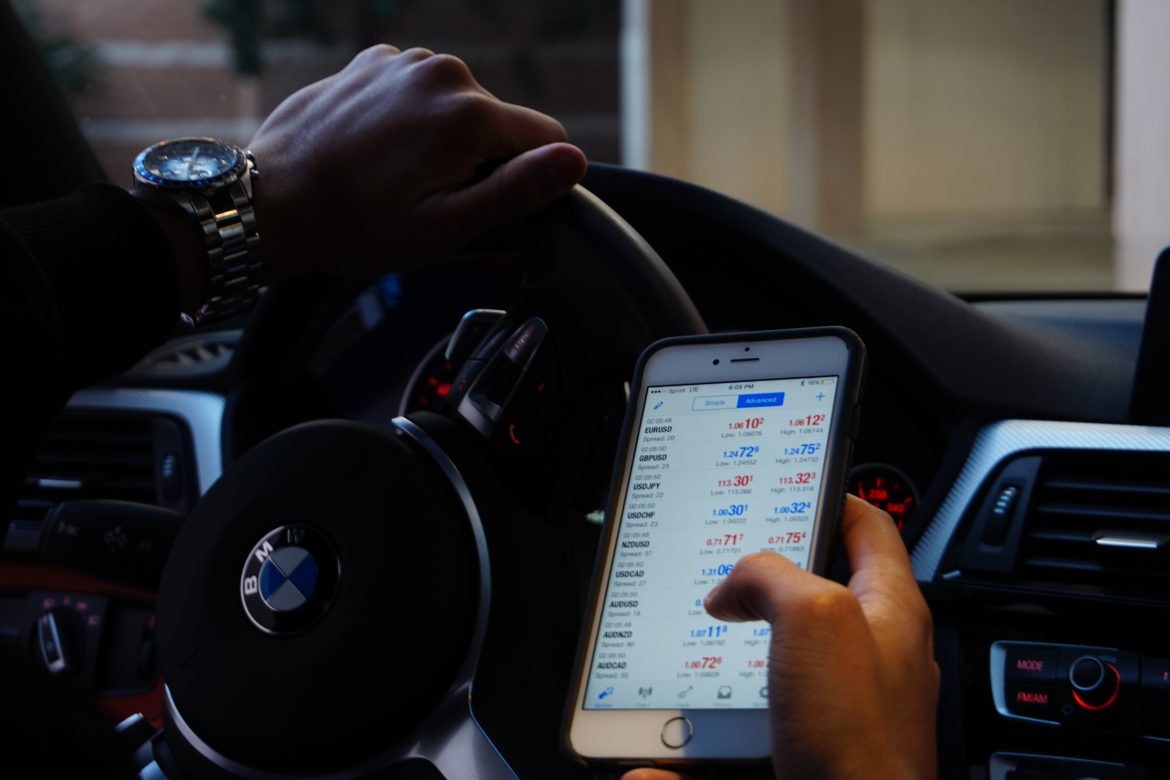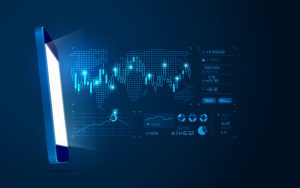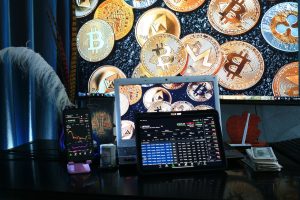The forex market is the largest and most active financial market globally. If you’re new to forex and unsure where to begin, you’ve come to the right source. This piece aims to provide top-notch education to beginners to navigate the forex trading landscape. Let’s get down to business.
What is forex trading?
Forex, short for foreign exchange, refers to converting one currency into another for various reasons, such as business, tourism, or facilitating international trade.
Forex trading occurs on the forex market, where currencies are bought and sold. The forex market runs every hour, every day, five days a week, and banks, businesses, investment firms, hedge funds, and individual traders utilise it.
Forex trading involves buying or selling currency pairs, where a trader predicts whether one currency will increase or decrease in value compared to another.
Therefore, a forex trader is an individual who engages in trading currency pairs. They hold a “position” in a currency pair, which is an active trade. This open position exposes the trader to potential profits or losses depending on how the market moves.
What is the forex market?
The foreign exchange, forex or FX market is a worldwide marketplace where banks, institutions, and investors trade and make guesses about different currencies.
The forex market sees massive trading activity, with an average daily turnover exceeding US$6.5 trillion. This amount has increased significantly from $5 trillion in recent years.
A critical aspect of the forex market is that it doesn’t have a central marketplace or physical exchange. Instead, all trading takes place electronically through computer networks. This type of market is called an over-the-counter (OTC) market.
Trade flows influence the value of a currency pair. These economic, political and geopolitical events affect the supply and demand of forex, creating daily volatility. For a forex trader, this volatility creates opportunities to profit.
What is an online forex broker?
An online forex broker is an intermediary facilitating retail traders to access online trading platforms as they speculate on currency price movements.
Individual traders leverage online brokers to control a significant forex position, even with a small deposit. While this helps increase the profit if the predictions are correct, it also increases the risk of significant losses.This trading platforms list has the best brokers that provide features tailored to clients’ trading objectives. And they offer a demo account to help you explore the markets risk-free.
Why trade forex?
Forex trading provides several advantages to individual traders. Firstly, you can trade anytime because the forex market operates globally and doesn’t rely on a central exchange like the stock market. It means you can take advantage of market volatility no matter where it occurs. Additionally, the forex market has high liquidity, allowing you to execute trades quickly and easily.
Using leverage in trading allows you to open positions by only investing a fraction of the total trade value. Still, it enables you to control large positions with a smaller investment. Moreover, you can go long (buy) or short (sell) on currency pairs based on whether you anticipate their value to increase or decrease.
Forex trading provides various opportunities across various currency pairs, ensuring constant possibilities for potential profits. Trading Guide offers comprehensive educational resources to enhance your trading skills and knowledge. These resources can be a valuable tool to get started and improve your understanding of forex trading.
Understanding currency Pairs
In forex trading, every transaction involves buying and selling two different currencies simultaneously. These currency pairs consist of a base currency and a quote currency. You sell one currency to purchase another.
The price of a currency pair indicates how much of the quoted currency you need to buy a unit of the base currency. But only if you accurately predict the price movement of a currency pair can you make a profit.
Trading platforms offer currency pairs, including major pairs popular in the forex market. Some examples of such pairs are the Euro/US Dollar, the US Dollar/Japanese Yen, and the British Pound/the US Dollar.
In most currency pairs, a pip represents the fourth decimal place, except for the Japanese Yen, which uses a pip in the second decimal place. Even slight differences in bid-ask prices (measured in pips) can lead to significant profits due to the large trading volumes involved in forex trading. However, it’s important to note that large trading volumes can result in substantial losses if the spread is not in your favour.
Trading forex carries risks, so it’s crucial to approach it cautiously and utilise risk management tools and techniques to protect your investments.
Essential components of currency pair trading
Understanding the unique features of the forex market and equipping yourself with knowledge will prepare you for success and enable further growth in your trading expertise. To succeed in currency trading, it’s important to learn the essentials of forex trading:
Base Currency
The base currency is the first listed, always on the left, traded for the quoted currency, and its value is always 1. For instance, a trader would need 1.1918 USD to purchase 1 EUR in the example. Conversely, they could sell 1 EUR for 1.1916 USD.
Bid Price
The bid price is the value a trader is willing to sell a currency. It is typically displayed on the left side of the quote and often shown in red. The bid price is dynamic and continuously updated in real-time since it reflects the current state of the live market.
Quote Currency
The quote currency comes second in the pairing format, always listed on the right side.
For example, in the EUR/USD pair, USD is the quote currency, indicating how much of the quote currency you’ll receive in exchange for 1 unit of EUR.
Ask Price
The asking price is the value a trader is willing to buy a currency or the least price the seller will accept. It is usually displayed on the right side and often in blue. The asking price is constantly changing in real-time as it reflects the current state of the live market.
Spreads and Pips
In forex trading, the spread is the gap between the prices at which you can sell or buy a currency pair. It’s like the cost of doing a trade.
A smaller spread means the selling and buying prices are closer, which is better for traders because it’s cheaper. A larger spread means a significant difference between the prices, which can be more expensive.
Traders prefer brokers with smaller spreads to save money and make more profits.
A pip, short for “point in percentage,” is the slightest possible movement or change in the value of a currency pair and is equivalent to a single point of movement.
Long and Short Positions
In forex trading, a long position is when you buy a currency, anticipating its value to increase. When you sell the currency back to the market at a higher price, you close your long position to complete the trade.
For example, if you open a long position on the Euro, you purchase 1 Euro for USD 1.1918. You hold this position, hoping that the Euro’s value will rise, and when it does, you can sell the Euro back to the market and make a profit.
On the other hand, a short position is when you sell a currency, expecting its value to fall. You plan to buy it back at a lower price. Closing a short position occurs when you repurchase the currency, ideally at a lower cost than the initial selling price.
For instance, if you believe the Euro will weaken against the Dollar, you would sell 1 Euro for USD 1.1916, establishing a short position. You anticipate the Euro’s value to depreciate, and you plan to repurchase it at a lower rate.
The forex market consists of major currency pairs, crosses, and exotic currency pairs. Major currency pairs include the US Dollar and account for most daily forex trade volume. Examples are EURUSD, GBPUSD, USDJPY, and USDCHF. These pairs have high liquidity and lower spreads. Cross currency pairs, or crosses, do not involve the US Dollar and include pairs like EURGBP, EURCHF, and EURJPY. Exotic currency pairs involve currencies from emerging or developing economies paired with a major currency. They are riskier to trade due to volatility and lower liquidity.
To trade forex, beginners can use fundamental and technical analysis. Fundamental analysis examines economic strength, news, data, central bank policy, and government actions. Technical analysis involves studying price action and using charts to identify trends and entry/exit points.
When starting forex trading, choose a licensed and regulated broker with experience. Open an active account, deposit, and use margin accounts or financial derivatives like CFDs to buy and sell currencies. Take time to learn the markets and utilise educational resources provided by brokers, offering tools, indicators, and charts for the analysis and execution of trades. Remember that trading involves risks, and trading responsibly and within your means is critical.
Final Word
The forex market offers vast opportunities for traders to profit from currency price movements. While forex trading offers opportunities for profit through buying and selling currency pairs, it involves risks. But with knowledge and practice, traders can navigate the market and work towards their goals. Beginners should understand major, cross, and exotic currency pairs, long and short positions, bid and ask prices, spreads, and pips. Choose a licensed broker, utilise fundamental and technical analysis, and trade responsibly.






